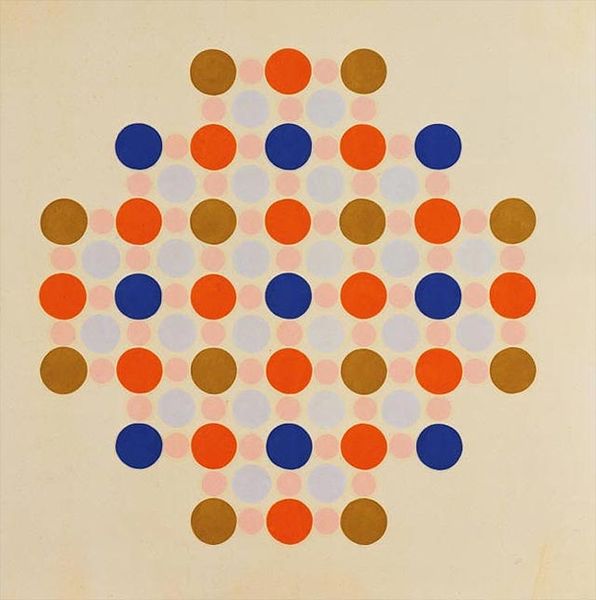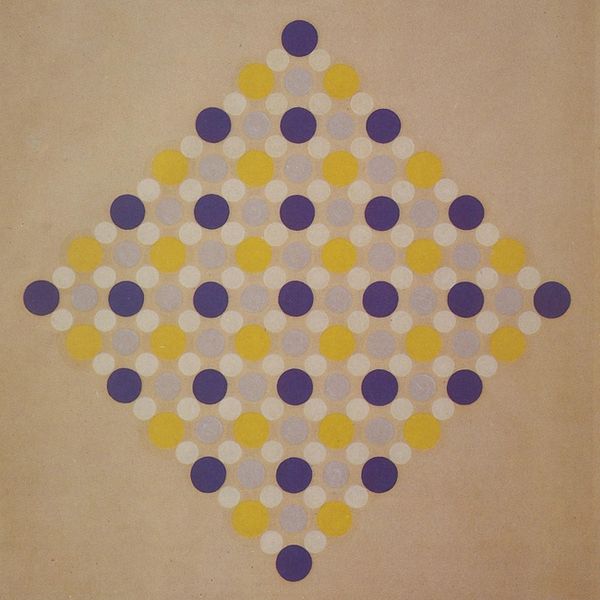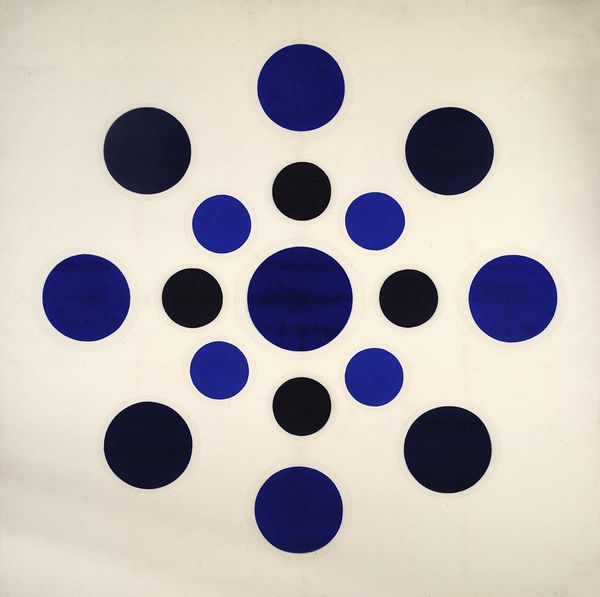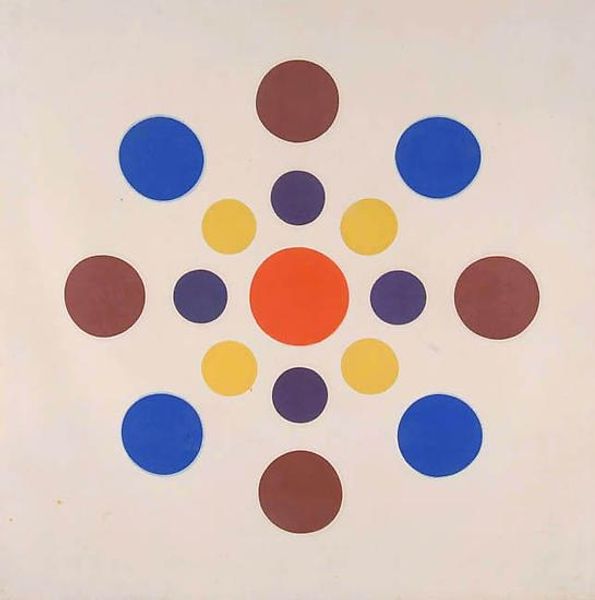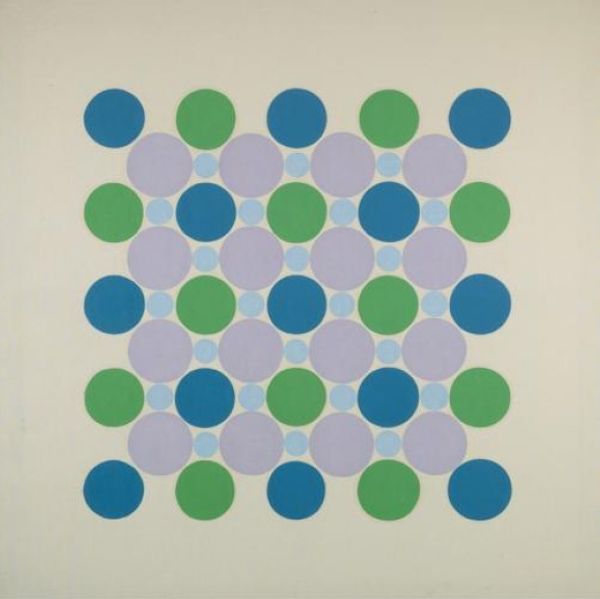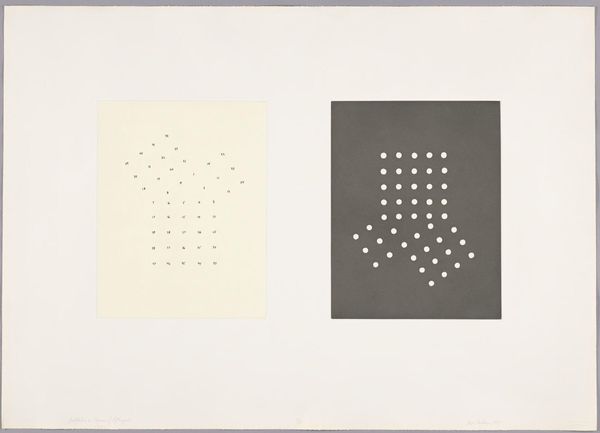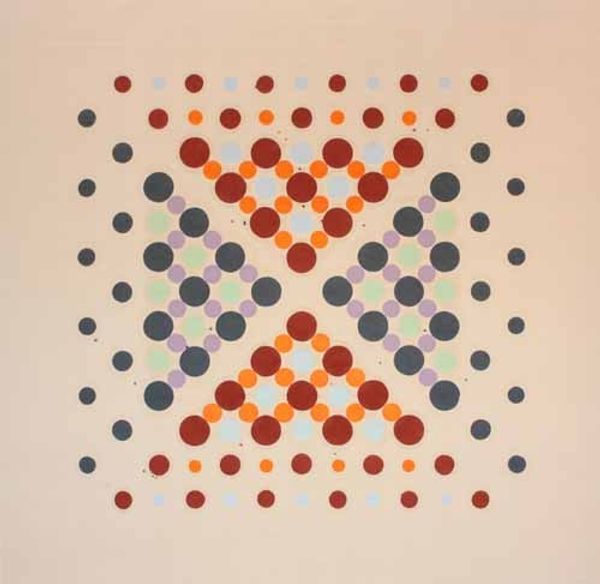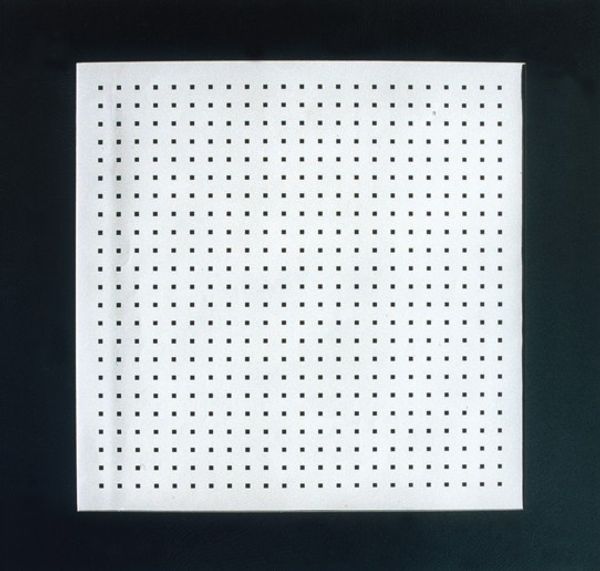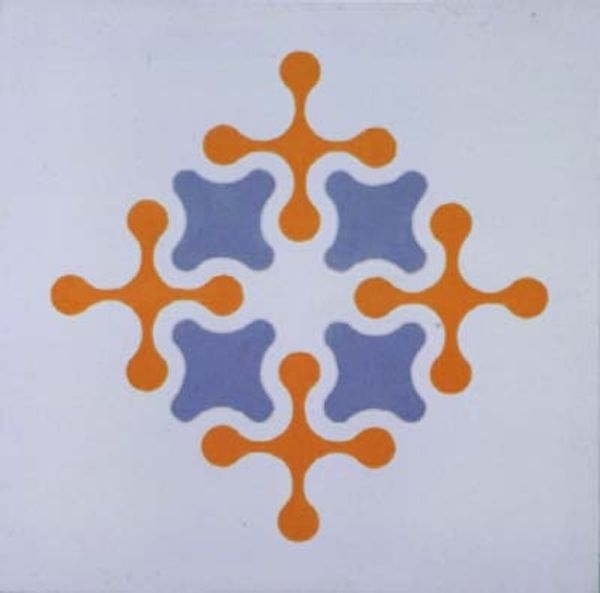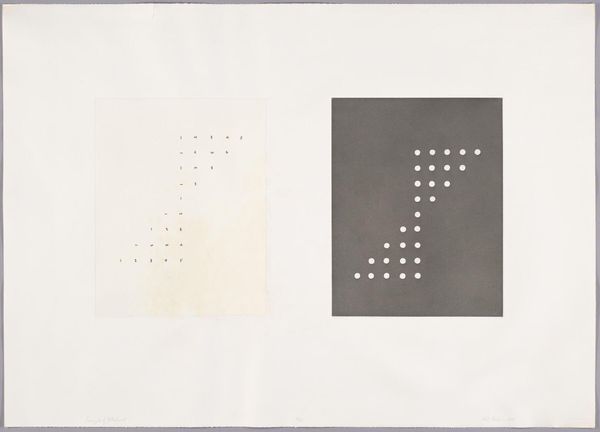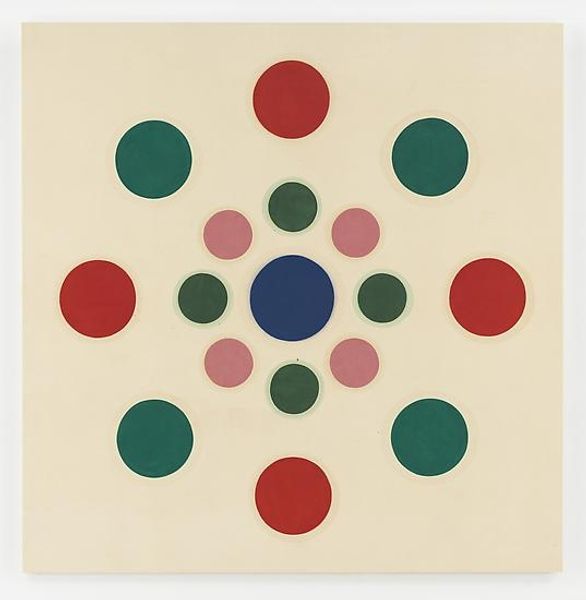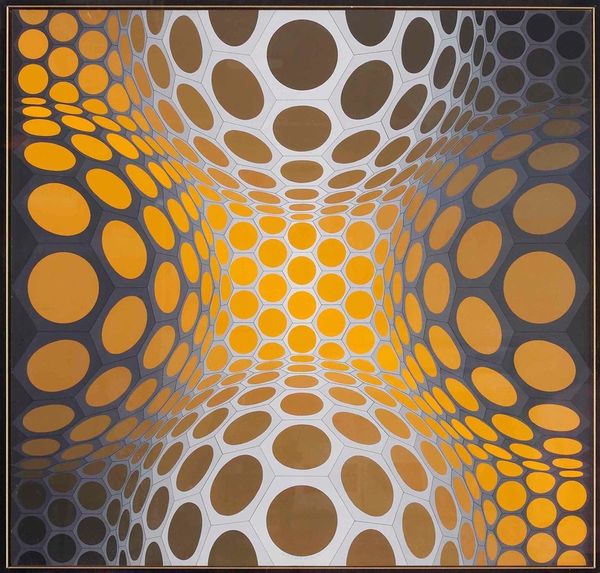
#
op-art
#
minimalism
#
pattern
#
geometric
#
abstraction
Copyright: Bridget Riley,Fair Use
Curator: Standing before us is Bridget Riley's "Black to White Disks," created in 1952. Notice how the composition plays with geometric abstraction, a dance of minimalism if you will, focusing on the grayscale, a precursor to her later Op Art pieces. Editor: Whoa, simple yet magnetic. It reminds me of a pixelated mirage fading into existence. So clean, almost meditative. Makes you wonder what stories each disk might contain. Curator: That's a great way to view it. Op Art certainly plays tricks with perception. As one’s gaze traverses from the upper right of pure darkness to the ethereal grayscale to the lower left, we see how gradual tonal shifts suggest movement and three-dimensionality despite being on a flat plane. These are early hallmarks of Riley’s language of abstraction. Editor: Totally! The shift in tone really messes with your eyes in a groovy, pleasant way. Did the artist think of this work as some kind of portal? Curator: That’s a fascinating suggestion. In terms of artistic intention, the stark contrast could symbolize duality – the liminal space between day and night or perhaps consciousness and the subconscious, presented in pure, unsullied form. In terms of the time when this was made, you must remember that in the years after WWII, these reductive forms captured the feelings about simplicity, the reduction to essentials. It wasn't just about patterns, but expressing the deepest elements. Editor: A lot of these shapes can be boring and static, but this thing sings. And portals sound so very cool, but that feeling of simplicity – stripping everything away – can speak louder. I get it. Curator: I find that deeply enriching as a closing perspective; after the devastation of World War II, a minimalist exploration could mirror the sentiment for purification, almost a collective visual exhale, with its own historical momentum. Editor: Yeah, like erasing the board and beginning anew. Not bad for something using so few elements, huh? It sort of captures hope in seeing patterns and transitions from blackness to lightness, right? It may be art playing mind games on us with no way to ever know what is on the other side.
Comments
No comments
Be the first to comment and join the conversation on the ultimate creative platform.

